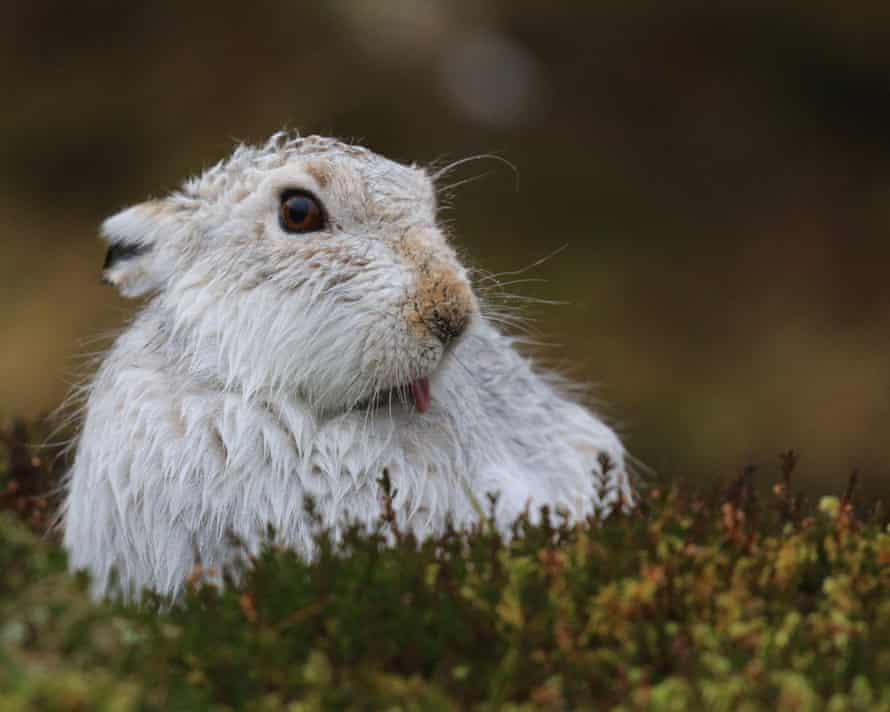When snow begins to fall, mountain hares melt into the landscape by shedding their dark fur and becoming a brilliant – but camouflaged – white.
But mountain hares in Scotland are failing to adapt to a dramatic increase in snowless days, with their white fur on dark mountainsides leaving them newly visible to potential predators.
Some high-latitude species have been shown to adapt their moult times to the rapidly changing climate.

However, a study of mountain hares in Scotland has found they are not changing their moult times at all, leaving them lacking appropriate camouflage on an extra 35 days each year on average compared with 65 years ago.
Historical records of mountain hare moults in the 1950s were compared with the observation of hares at comparable Scottish sites in 2015 and 2016 by a team of scientists in North America and Scotland.
Led by Dr Marketa Zimova of the University of Michigan, the researchers also analysed more than six decades of weather data revealing a drastic decline in “snow days” over a similar period for the study published in Proceedings of the Royal Society B.
They found that there was an average decline of 37.14 days of annual snow cover between 1960 and 2016 on their Highland study sites. By 2016, the average early autumn snows occurred four days later while the late spring snows were on average a week earlier than in the 1960s.
For species in snowy environments that change their colouration to avoid predators, such as Arctic foxes or ptarmigan, changing day length has been found to be the principal driver of the moult.

But other studies have found animals can adapt their moults to keep pace with climate change because if they do not remain camouflaged they are vulnerable to predation. In North America, the weekly survival of snowshoe hares declined by 7-14% when the animals were mismatched against their background. Increased predation rates also occurred among mismatched mountain hares in Norway.
But despite a strong evolutionary pressure on animals to adapt to snowless conditions, the scientists found no such adaptation among Scotland’s mountain hares.
In the 1950s, the hares acquired their winter coat in late October and moulted again in the spring, around mid-March. They continued to moult at the same time until the 2010s.
According to the scientists, the failure of the hares to adapt their moults when other animals in different environments are doing so could be because of a lack of natural predator pressure in Scotland, a lack of genetic diversity among mountain hare populations or the rapidity of the climatic changes.
Scott Newey of the James Hutton Institute, a co-author of the study, said: “The fact that mountain hares are not adapting the moult is really quite surprising. It could be because the mountain hare population doesn’t have the diversity within the gene pool to adapt and make changes, or it could be that the change in snow-lie is too rapid.
“The third hypothesis is that the studies were carried out on areas that are managed for driven grouse shooting and driven grouse shooting is associated with predator control, particularly foxes and crows, which are legally controlled.”
With the grouse shooting industry having suppressed populations of natural predators including wildcats and golden eagles for more than a century, there may be no urgent evolutionary pressure on mountain hares to adapt their colouration to surrounding conditions because hares that are mismatched against their surroundings may survive.
But the study warns that if predators return – with the reduction of grouse shooting, for instance – mountain hares could be vulnerable to population declines because they have not adapted their moult timings to remain camouflaged.